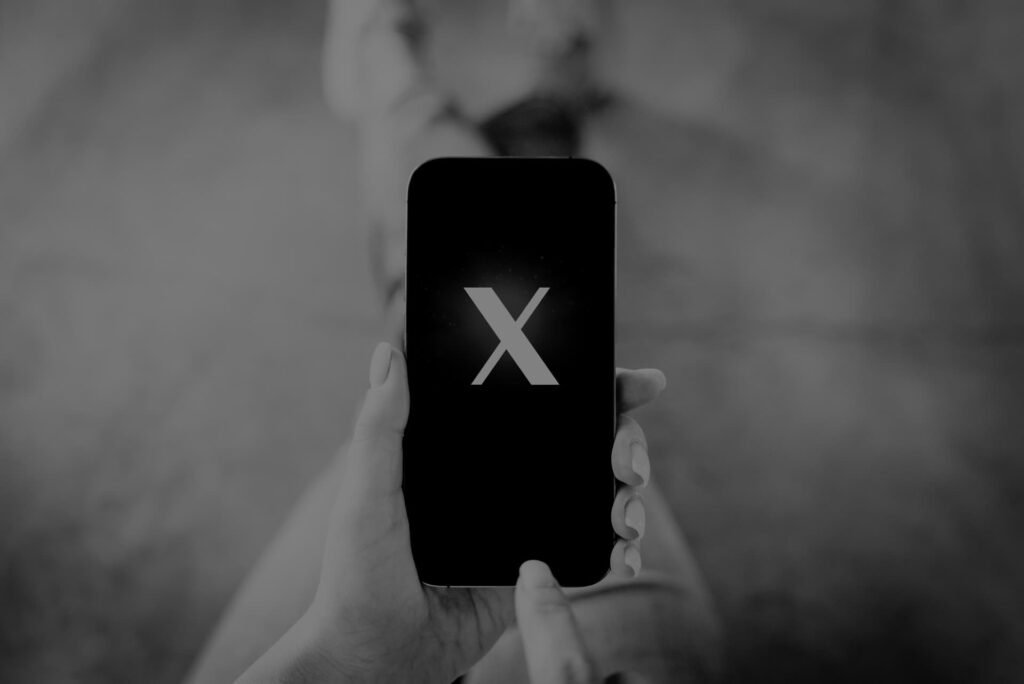While everyone’s talking about this platform’s turbulent journey, here’s what’s actually happening.
X reached 561 million monthly active users as of July 2025, which sounds impressive until you realize that number dropped from 586 million just a year earlier. The platform ranks 15th among global social networks, having fallen from 12th position in 2024. For marketers trying to justify their budgets, these numbers tell only part of the story.
The important question isn’t just whether X has users; it’s whether those users, the advertising environment, and the platform’s direction align with your marketing goals for 2025. Since Elon Musk’s acquisition in October 2022, X has undergone changes that have fundamentally altered its value proposition for brands. While some of these changes have created new opportunities, others have introduced risks that many major advertisers have deemed unacceptable.
Research from Kantar found that 26% of marketers worldwide plan to decrease their X advertising spending in 2025, representing the most significant recorded pullback from any central global advertising platform. Meanwhile, only 4% of marketers believe X ads provide brand safety, compared to 39% who said the same about Google. These aren’t just statistics. They represent a crisis of confidence that’s reshaping how brands approach the platform.
Yet X isn’t dead. The platform has 132 million daily active users across iOS and Android, although this figure represents a 15.2% year-over-year decrease. Video views increased 29% in 2024, and product-focused campaigns on X achieved a short-term sales return on investment of almost $2, compared to about 30 cents for brand-only campaigns. For specific industries and audiences, X remains a viable option. For others, it’s become a reputational liability they can’t afford.
This article examines X’s current state through data, not hype. We’ll explore who’s still finding success on the platform, what’s changed since the rebrand, the brand safety concerns driving advertisers away and whether X deserves a place in your 2025 marketing strategy.
What actually changed since Twitter became X
The rebrand from Twitter to X in July 2023 symbolized more than a name change. It represented Musk’s vision of transforming the platform into an “everything app” that would eventually incorporate payments, subscriptions and diverse services beyond social media. While that vision remains unrealized, several concrete changes have reshaped the platform’s marketing landscape.
The verification system underwent the most visible transformation. Twitter’s legacy blue checkmark indicated authenticity, granted to notable accounts after Twitter verified their identity. X monetized verification through X Premium subscriptions starting at $8 monthly for individuals and $200 monthly for organizations. Anyone with sufficient funds could now obtain a verified badge, eliminating the credibility signal that verification once provided. For brands, this created confusion about which accounts represented legitimate companies versus impersonators.
Content moderation policies shifted dramatically. Musk fired 80% of X’s workforce after the acquisition, including a significant portion of the content moderation team. Previously banned accounts returned to the platform, including those removed for spreading misinformation or hate speech. The platform positioned these changes as a defence of free speech, but they created an environment where brands worried that their advertisements might appear alongside extremist content.
The algorithm evolved to prioritize different content types. X now promotes posts with visual content, such as GIFs, images, and videos, more prominently than text-only posts. The platform also adjusted its algorithm to surface content from smaller accounts that users don’t directly follow, theoretically increasing organic reach for newer creators. Whether this change actually benefited most marketers remains debatable, as overall engagement rates on X dropped approximately 20% in 2024.
Character limits expanded for paying subscribers. X Premium users gained the ability to write posts up to 25,000 characters, dramatically different from Twitter’s original 140-character (later 280-character) limit. This fundamentally changed how the platform functioned, although most users continued posting shorter content that aligned with X’s quick consumption nature.
Video capabilities received significant investment. X launched a dedicated video tab for US users in January 2025, creating a full-screen video experience similar to TikTok or Instagram Reels. Video views on X increased 40% year-over-year, and video now appears in more than 80% of all user sessions. For video-focused marketers, this represents a genuine opportunity.
The platform’s business model shifted toward reducing dependency on advertising revenue. X introduced premium subscriptions, creator monetization programmes and explored cryptocurrency integration. While advertising still accounts for the majority of X’s revenue, the platform has clearly sought to diversify its income streams.
The numbers: Who’s actually using X in 2025
Understanding X’s current user base helps determine whether your target audience actually spends time on the platform. The data reveals some surprises.
The United States leads with 103.9 million X users, followed by Japan with over 70 million and India with approximately 25 million. These three markets represent X’s core geographical strength, though the platform maintains a presence across most countries. If your target market is concentrated in these regions, X offers a greater potential reach than in markets where the platform has not yet gained strong adoption.
Gen Z represents X’s biggest generational group, growing 12% since 2022. This surprises marketers who assume younger users exclusively prefer TikTok and Instagram. X’s Gen Z audience drove a 6.9% increase in brand equity in Q3 2024, suggesting that these users engage meaningfully with brand content. However, approximately 37.5% of users belong to the 25-34 age group, making this the platform’s most significant demographic segment.
Gender distribution skews heavily male. Around 63.7% of X users identify as male, while 36.3% identify as female. This gender imbalance is particularly significant for brands targeting female consumers, who may find better engagement on platforms like Pinterest or Instagram, where the gender distribution differs.
Users spend an average of 34 minutes daily on X, with Android users specifically spending 29 minutes per day on average in May 2025. This represents solid engagement time, although it pales in comparison to platforms like TikTok, where users often scroll for over an hour daily. The quality of that engagement time matters as much as quantity.
Most X users access the platform for news (48%) and entertainment (48%), with 82% stating they use X primarily for entertainment purposes. This dual focus on news and entertainment creates specific opportunities for brands that can tap into trending conversations or provide entertaining content. It also explains why particular industries (news, politics, technology, sports) find more success on X than others (lifestyle, wellness, family-friendly brands).
Daily active users tell a concerning story for the platform’s health. X reports 132 million daily active users across mobile apps, showing a 15.2% year-over-year decrease. While 561 million monthly users suggest significant reach, the declining daily engagement indicates many users check X less frequently than they once did. For advertisers, this matters because campaign effectiveness depends on users actually seeing your content.
The platform’s user activity distribution reveals extreme concentration. A small percentage of highly active users generate the majority of content, while most users consume rather than create it. This pattern also existed on Twitter, but understanding it helps set realistic expectations for organic reach and engagement rates.
Brand safety concerns that drove major advertisers away
The exodus of major advertisers from X represents the platform’s most significant challenge in 2025. Understanding why these brands left helps you assess whether similar concerns apply to your business.
Major advertisers, including Disney, Sony Pictures, Paramount, Lionsgate and Universal, halted activity on X after Elon Musk publicly supported an antisemitic conspiracy theory. This wasn’t an isolated incident but rather the culmination of ongoing concerns about content moderation and the platform’s direction. These brands didn’t pause campaigns temporarily. They stopped advertising altogether, and many haven’t returned.
Advertising revenue on X declined 46.4% from $4.5 billion in 2022 to $ 2.4 billion in 2023. While eMarketer forecasts revenue growth of 16.5% in 2025 (partly attributed to Musk’s political influence during the Trump administration), the platform’s ad revenue remains substantially lower than pre-acquisition levels. The brands that left represented significant spending. Media Matters reported that the 50 advertisers who departed had collectively spent nearly $2 billion on Twitter ads since 2020.
Content adjacency concerns dominate advertiser conversations. Multiple reports documented brand advertisements appearing next to hate speech, misinformation and extremist content. For companies that invest heavily in brand reputation, the risk of association with such content outweighs X’s potential reach. One agency leader told Campaign that “with the platform declining daily into what can only now be described as the cesspit of the internet, we can’t see brands ever returning unless something fundamental changes at X.”
The dismantling of content moderation infrastructure created these adjacency issues. When X reduced its trust and safety team by 80%, the platform lost much of its capacity to identify and remove harmful content before brands’ advertisements appeared alongside it. X claims its brand safety rate averages 99%, as validated by DoubleVerify and Integral Ad Science; however, many advertisers clearly don’t trust these assurances, given the ongoing reports of problematic placements.
Musk’s own behaviour on the platform compounds these concerns. His posts frequently generate controversy, and his public statements about advertisers (including telling them to “go f**k yourself” at the DealBook conference) created an adversarial relationship with the very companies his business depends upon. When a platform’s owner actively antagonizes advertisers, those advertisers understandably question whether the platform welcomes their business.
The legal battles X initiated against advertising organizations further damaged relationships. X sued the World Federation of Advertisers’ Global Alliance for Responsible Media, alleging that the organization had conspired to withhold advertising dollars. GARM subsequently dissolved, citing limited resources to fight the lawsuit. This aggressive stance toward industry bodies designed to ensure brand safety sent a clear message that X viewed advertisers’ legitimate concerns as conspiratorial rather than reasonable business considerations.
Interpublic Group, Havas Media, and GroupM all recommended that their clients pause advertising on X, representing a collective influence over billions in advertising spend. When major advertising agencies advise clients to avoid a platform, that platform faces an uphill battle to rebuild trust.
ROI reality: What the data actually shows
Despite the challenges, X advertising can deliver results for specific campaigns and industries. The question is whether those results justify the reputational risks and whether alternative platforms might provide better returns.
Marketing mix modelling studies found that for every dollar spent on X ad campaigns, there’s an average return of $2.70, nearly 40% higher than the average return on other media investments. This data comes from research conducted with Dentsu Aegis Network, analyzing two years of X advertising across four major brands. The studies also found that X’s promoted video ad format achieved up to 20% better sales results than other X ad formats.
However, context matters enormously. These studies analyzed campaigns run before many of the platform changes discussed earlier. More recent advertiser sentiment suggests current ROI may not match these historical benchmarks. A survey of US ad buyers found that only 7% believe Facebook offers the highest social media ad ROI, with YouTube at 6%, while X wasn’t mentioned in the top-performing platforms.
Engagement rates on X dropped approximately 20% in 2024, which directly impacts campaign effectiveness. Lower engagement means your content reaches fewer people and generates fewer interactions, reducing the return on your creative and media investments. The average engagement rate per tweet across all industries is 0.029%, representing a challenging baseline for organic content.
Video content performs strongest on the platform. With video views increasing by 29% and video appearing in over 80% of user sessions, brands that can create compelling video content may achieve better results than those relying solely on text or static images. The platform’s algorithm now heavily favours video, making it almost essential for meaningful reach.
X users are 38% more likely to download an app from an ad compared to users on other social platforms, according to X’s own data. For app developers and companies with mobile apps, this conversion advantage could justify continued advertising despite other concerns. Similarly, 29% of American users look for product reviews and recommendations on X, suggesting purchase-intent audiences still use the platform for research.
Cost efficiency represents another consideration. With many large advertisers reducing their spending, competition for ad placements has decreased in some categories, potentially leading to lower costs per impression or click. However, this advantage disappears if the reduced competition reflects audiences abandoning the platform rather than a decline in advertiser demand.
The challenge with X’s ROI in 2025 isn’t necessarily that campaigns fail; instead, it’s that they fail to meet expectations. It’s that other platforms often deliver comparable or better results without the brand safety risks associated with them. When TikTok achieves a short-term ROI of 11.8% according to research with Dentsu, or when Meta’s platforms offer 5X higher ROI for ads with visible logos in the first two seconds, X’s $2.70 return per dollar spent becomes less compelling.
Industries and brands are still finding success on X
Despite the advertiser exodus, specific sectors and brand types continue achieving results on X. Understanding who succeeds helps determine whether your business fits the profile.
Technology companies remain heavily active on the platform. X’s user base skews toward tech-savvy early adopters who actively discuss technology products, software and innovations. For B2B technology companies, developers and IT professionals, X provides access to decision-makers and influencers in concentrated numbers. Tech product launches, feature announcements, and technical content consistently generate engagement.
News and media organizations treat X as essential infrastructure. The platform’s real-time nature and its role as a source for breaking news make it indispensable for journalists, news outlets and media companies. Political news, financial markets and sports updates all find engaged audiences on X. Media brands accept the platform’s challenges because their audiences expect them to maintain presence where news breaks first.
Sports organizations and athletes effectively leverage X’s live-conversation nature. Fans discuss games in real-time on X more than any other platform. Sports teams, leagues and individual athletes build community and drive engagement around live events. The platform’s character limits and fast-paced feed are well-suited to the quick reactions and hot takes that sports conversations generate.
Political organizations and candidates continue using X for direct communication and fundraising. The platform’s influence among journalists and political insiders makes it valuable for shaping narratives and reaching politically engaged audiences. Love it or hate it, X remains the platform where political conversations take place online.
Finance and cryptocurrency communities maintain a strong X presence. Financial news moves markets in real-time, and X provides the fastest distribution channel for that information. Cryptocurrency advocates, in particular, treat X as their primary community platform. Financial advisors, investment firms and fintech companies find their professional audiences scroll X for market insights.
Small businesses and solopreneurs sometimes achieve outsized success on X compared to other platforms. The algorithm’s reported preference for surfacing content from smaller accounts (though this remains debatable in practice) theoretically provides opportunities for creators without massive followings. Personal brands, consultants and service providers who build authentic communities can generate leads and clients through consistent, valuable content.
Conversely, specific industries face significant challenges on X. Family-friendly brands, wellness companies, and lifestyle businesses often find better alignment with Instagram’s aesthetic focus or TikTok’s entertainment value. Fashion brands that rely on visual storytelling struggle with X’s text-first heritage, though video features offer some solutions.
Large consumer brands that previously viewed X as essential now question that assumption. When major advertisers like Coca-Cola, Dove, and other consumer packaged goods companies reduce or eliminate their spending on X, they signal that alternative platforms better serve their needs. These brands need safe, predictable environments where their advertisements enhance their reputations rather than risk them.
Real talk: Should X be in your 2025 marketing mix?
The industry is shifting. The question is whether you’ll lead or follow.
After examining the data, the advertiser exodus, platform changes, and selective success stories, the answer to “Is X worth it?” depends entirely on your specific situation. There’s no universal recommendation that applies to every brand.
Consider maintaining or increasing your investment in X if you operate in the technology, news, sports, finance, or political sectors, where your audience is concentrated on the platform and expects your presence. If your brand targets primarily male audiences aged 18-34 interested in news and entertainment, X offers access to that demographic. If you can create compelling video content and have risk tolerance for the platform’s volatility, opportunities exist that competitors may be abandoning.
Consider reducing or eliminating X investment if brand safety is a top priority and your stakeholders have a low tolerance for reputational risk. If your target audience skews female, older, or outside X’s demographic sweet spot, other platforms are likely to deliver better results. If you market family-friendly, wellness or lifestyle products that depend on polished, controlled brand environments, X’s unpredictability creates more risk than reward.
The middle path involves maintaining minimal X presence for customer service and monitoring while shifting advertising budgets to more stable platforms. Many brands treat X as a listening tool for tracking conversations about their company, industry or competitors without investing heavily in paid campaigns or organic content creation. This approach acknowledges X’s remaining influence on news cycles and public discourse while protecting advertising budgets from a declining platform.
Alternative platforms have absorbed much of the audience and advertising dollars, leaving X. Threads, Meta’s Twitter competitor, offers familiar functionality with Meta’s established advertising infrastructure and content moderation. LinkedIn continues to grow for professional audiences and B2B marketing. TikTok, despite its own challenges, delivers engagement rates that dwarf X’s current performance. Instagram’s Reels feature attracts users seeking short-form video without X’s controversies.
The decision also depends on your ability to manage the risks actively. Brands with dedicated social media teams who can monitor content placement, respond quickly to issues and pull campaigns if needed carry less risk than smaller businesses running automated campaigns without oversight. If you lack the resources to monitor where your ads appear and how audiences respond actively, the safer choice is to use platforms with more robust automated brand safety controls.
Your marketing objectives matter significantly. Suppose you’re driving awareness at the top of the funnel and measuring success through reach and impressions. In that case, X’s declining user base and engagement make it less attractive than platforms with growing audiences. If you’re focused on conversions and can directly attribute sales to specific campaigns, a positive ROI might justify continued investment, despite broader platform concerns. If you’re building community and fostering relationships, X’s conversation-focused design still offers advantages over platforms that prioritize passive consumption.
Testing proves more valuable than assumptions. Rather than making permanent decisions based on industry trends, run controlled experiments that measure X’s performance against alternative platforms for your specific audience and objectives. Allocate a small portion of your budget to X campaigns, measure results rigorously and scale based on data rather than opinions. You might discover that despite broader industry trends, your niche audience remains active and responsive on X. Or you might confirm that shifting resources elsewhere delivers better returns.
The platform will likely continue evolving throughout 2025. Monitor whether promised features are actually launched, whether content moderation improves, whether major advertisers return, and whether user numbers stabilize or continue to decline. The X of December 2025 might look substantially different from the X of January 2025, for better or worse.
One thing appears certain: X will never return to the position Twitter held in 2021 as a universally accepted component of every brand’s social media strategy. The combination of user decline, advertiser flight, content moderation concerns and owner controversy created permanent changes in how marketers view the platform. Some brands will continue finding value. Others have moved on permanently. Your job is to determine which category fits your business.
Measuring success if you choose to stay
Let’s say you’ve decided X deserves continued investment based on your specific circumstances. Success requires different metrics and monitoring than those used on pre-2022 Twitter.
Track not just engagement rates but engagement quality. Are your posts generating meaningful conversations with potential customers, or just collecting likes from bots and spam accounts? The verification changes mean follower counts matter less than the authenticity of your engaged community. Evaluate the quality of replies, the credibility of accounts sharing your content, and whether engagement translates to business outcomes.
Monitor brand mentions and sentiment more carefully than on other platforms. X’s loosened content moderation means negative sentiment, misinformation about your brand and coordinated attacks can spread quickly without intervention. Set up alerts for your brand name, product names and key executives. Respond promptly to misinformation before it gains traction. The reputational risks that concern major advertisers apply to brands of all sizes.
Measure cost efficiency against alternative platforms rather than historical X benchmarks. Your cost per click or cost per acquisition might look reasonable in isolation, but if Instagram delivers the same results at 40% of the price, X underperforms regardless of historical standards. Run parallel campaigns on multiple platforms with consistent creative and measure comparative results.
Track video performance separately from other content types. With X’s algorithm heavily favouring video, and video views increasing substantially, video content is likely to outperform text or static images significantly. If you’re not creating video content, you’re fighting against the algorithm’s preferences. When making a video, ensure you’re measuring view completion rates, not just view counts.
Watch for changes in audience composition. If your engaged followers increasingly represent spam accounts, low-quality profiles or audiences outside your target market, that signals declining content quality even if total follower counts remain stable. Audit your follower base quarterly to ensure it continues to represent your target customers.
Compare X’s performance to owned channels, such as email lists and SMS subscribers. If X drives traffic to your website but those visitors rarely convert, while email subscribers convert at high rates, that suggests reallocating resources toward channels with higher-intent audiences. X works best as one component of an integrated strategy rather than a primary acquisition channel.
Set apparent “stop loss” thresholds before launching campaigns. Decide in advance what metrics would trigger pausing or eliminating X investment. This might include engagement rates dropping below specific levels, the cost per acquisition exceeding targets by a defined margin, or negative brand sentiment reaching unacceptable levels. Having predetermined criteria prevents emotional decision-making when campaigns underperform.
Document the strategic reasoning for maintaining X’s presence. When stakeholders question why you’re advertising on a controversial platform, clear documentation of audience alignment, performance benchmarks, and active risk monitoring demonstrates thoughtful strategy rather than inertia. This documentation also helps when the decision is inevitably reevaluated in future quarters.
Consider the opportunity cost of your time and creative resources. Every hour spent creating X content is an hour not spent on other platforms or marketing channels. Every dollar spent on X ads is a dollar unavailable for alternatives. Even if X delivers positive results, could those same resources deliver better results elsewhere? Opportunity cost matters as much as absolute performance.
Stay informed about platform changes, advertiser movements and industry sentiment. X evolved dramatically between 2022 and 2025, and it will likely continue changing throughout the year. What works in Q1 might fail in Q4 if the platform introduces new features, loses more users or faces additional advertiser boycotts—flexibility and willingness to pivot based on new information matter more than commitment to any specific platform.
Disclaimer: Social media platforms are subject to frequent changes—strategies based on current best practices as of October 2025. Always test with your audience.




